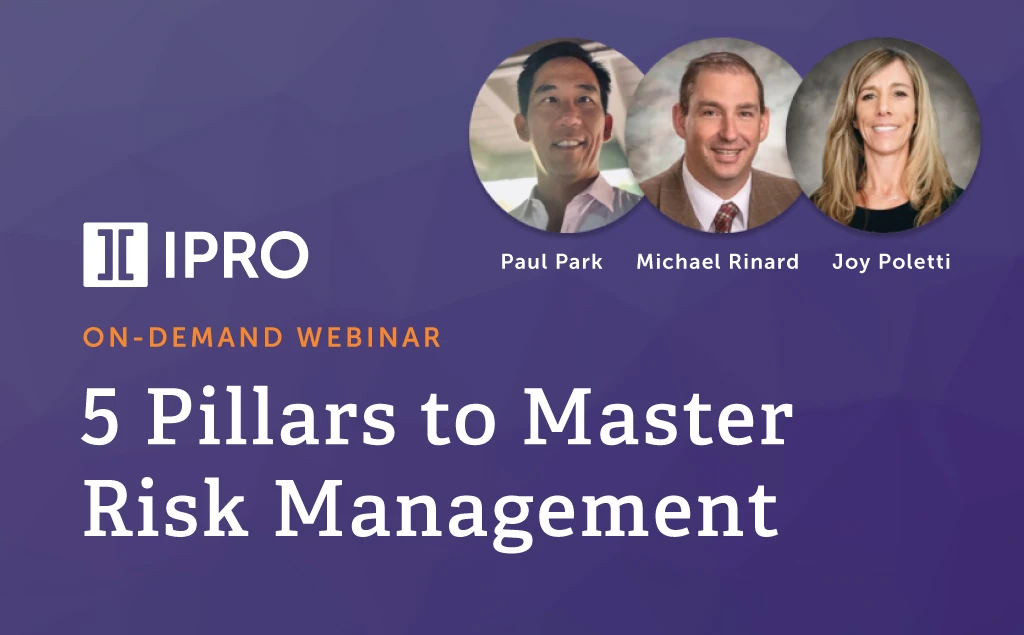About the Webinar
Law firms who can locate and evaluate relevant information at the outset of a legal matter keep clients and win cases. These same firms do so with a bulletproof Early Case Assessment (ECA) workflow.
When done well, ECA is like a crystal ball that gives you a sneak peek into the future life of a case, allowing you to glean all the insight you need to formulate an effective strategy and efficiently handle the matter to its correct conclusion.
Sonja C. Peterson, Practice Support Manager from Parsons Behle & Latimer and Randi Truelove, Lead Solutions Engineer at IPRO discuss 6 foolproof ways, and best practices your law firm can adopt, to handle ECA more efficiently and effectively. Enjoy!
Featured Speakers
Sonja Peterson
With over 30 years of experience in legal tech and project management, Sonja knows eDiscovery. She manages and trains case teams on best practices in trial consulting and case assessment, is an IPRO Certified Administrator, and an expert in technical programming, analytics, and workflow optimization.

Sonja Peterson
Practice Support Manager
Parsons Behle & Latimer

Randi Trulove
Lead Solutions Engineer
IPRO
Randi Trulove
In her 18+ year career, Randi has served in the Litigation Support department for several top law firms. She has regularly consulted with attorneys and clients on all phases of the EDRM. Currently, as the Lead Solutions Engineer at IPRO she has a unique perspective building defensible and repeatable workflow systems with legal teams across the country. Randi is known in the industry for her skills and expertise in electronic discovery, project management, trial consulting and technical operations.
Webinar Transcript Excerpt
Randi Truelove – 1:05
Hello, everybody. My name is Randi Truelove, from IPRO and I also have Sonja Peterson here with me. Today, we are going to be presenting six foolproof ways to optimize your ECA workflow. We’re also going to do a deep dive into why ECA matters, and how ECA and EDA are different from each other.
Randi Truelove – 3:21
Let’s hop right in. So why does ECA (early case assessment) really matter? Early case assessment is the process of locating all of this important information at the beginning of your legal matter. This does not just mean data. Early case assessment is a true assessment of the entire matter, of the entire case. It’s everything from being able to calculate the risk involved, the cost that’s going to be involved in litigating this particular matter.
Randi Truelove – 7:08
Moving forward – we outlined six best practices for an efficient early case assessment. Number one is about ensuring effective data preservation. We all know what you need to do to preserve data effectively. But have you ever thought about what you can do to be more informed within the initial stages of your case?
We have a product that connects into logged data sources that allows you to get a glimpse into any of your live sources of data. This solution is called Live EDA – it allows you to connect into the live data, to run search trends on the fly, and to narrow down information by custodians. Essentially, it is there to help you make more informed decisions.
Sonja Peterson – 10:51
So in an ideal world, like Randy said, you want to be able to review all of your data first thing, even before collection. But it doesn’t always happen that way. This is why Live EDA, the tool that we have been able to use here at the firm has helped us out immensely. One benefit that you have to realize is that with Live EDA, you can always go back to the live data and perform more searches, once you dig deeper into your case.
Randi Truelove – 11:49
Yeah, I think that you have quite some experience with our Live EDA product.
Sonja Peterson – 13:26
Yes, I have had a lot of experience working with it over the last two years. We have had several government cases come in. And those entities always come back after they’ve gotten their first set of documents and want more data. And what’s nice is you can go back, you can run more searches with Live EDA and get what you need in an instance. Plus you’re able to spot PHI and PII in there and alert your case team of what you found straightaway. Normally, you don’t identify this kind of information until it’s too late.
Sonja Peterson – 13:57
Okay, so leading into the data culling strategy. Let’s say you’ve got a big mess of all sorts of data on your hands. When you employ the Live EDA tool, you’ve got index data and you’re able to bring in only relevant information, leaving all the irrelevant data out.
We’ve also used Live EDA with multiple PSTs. I think we had like 20 PSTs that the client had already pulled. And we pulled all those into Live EDA, instead of dumping all of that data into our database. We were able to pull that down even further from over 500,000 documents down to like 25,000. And even then the attorney was shocked that we had that many. But it was really nice, because we were able to perform the culling. And we were able to use that tool even just for PST files.
Randi Truelove – 16:36
So another thing that I’ve seen with a lot of our clients who have been using live EDA is the ability to cut down on the amount of data that they are having to collect. It’s going to help from a review aspect of how much data you have to process, host and review. It’s going to help from a preservation standpoint, if there is a company that has multiple litigations that are going on at the same time. So there are a lot of different factors that have to be considered.
Sonja Peterson – 18:53
And another point on this – cost is a huge issue. And this tool saves the client enormous amounts of dollars, because they don’t have to do all that processing through a vendor, and then being charged for pre-processing, and then processing all the data, and then culling down your search.
Randi Truelove – 19:56
That’s a great point. In our next slide here, we say that it is important to take a phased approach of EDA, in general, with whatever tool you end up choosing. Often, the scope of your case changes; new facts come into place. So by adopting a phased EDA approach, you can continuously go back to your sets of data that you previously collected and enrich them.
Randi Truelove – 21:39
Now, number six of the slide is actually one of the most important – it highlights in-place search technology as essential to use. So one of the most important things for you to truly be able to do an efficient early case assessment and efficient early data assessment is being able to search data in place, being able to find a tool that has multiple connectors to Gmail; Teams; Slack, etc.
Sonja Peterson – 24:00
To add to what Randi has just spoken about, last year, my client had done their own collection, and gave us screenshots of that data. Just to give you an idea – during the pandemic, everybody was using Teams and Slack. And I reached out to IPRO and asked them if we can pull this data in, because we’re missing these chats. The client only agreed on having three other custodians. I did the searches and I was still not able to find the chats that corresponded with his screenshots. We got permission to access their [client’s] database, and we had to attach to their entire Microsoft Teams, which was enormous.
It was great to be able to do that, because as soon as I put in those same searches – boom, there was all the information that I needed, somebody had branched off into another Teams chat instead of the Teams chat that the client had mentioned. And that’s where, you know, using this in-place search technology works really well. And so now, we can always go back to that data and do more searches for the client.
Randi Truelove – 28:49
Thank you, Sonja. That brings us to the end of our presentation. We’ve got a few questions in the chat that we will try to cover next.

